September 15, 2009 · 1 Comment
I believe that this is a very important question that we must ask ourselves in order to understand museums and London in general. England is one (or maybe the only one, I am still trying to find out) of the countries in the world that has so many big museums which you can enter for free.
Apparently, museums in London used to be private, but in December 2001, the 15 main ones, such as the British, the Imperial War, the Tate Modern, were made public by Tony Blair’s administration. Many supporters of ‘New Labour’ considered this policy to be one of the major achievements of the party’s agenda. The government at the time was seeking to increase museum audience across the multicultural spectrum. They thought that by making the museums free of charge, they would receive not only a larger audience, but a more diverse one. Why museums? As I mentioned in an earlier post, museums have proven to articulate the ideology of the state and work as institutions that reclaim the national identity, much needed to rule a country.
After some time, research showed that, while making the museums public had increased tourism, they did not attract new audiences, but rather more frequent visits by the same crowd as before (mostly white and upper middle class art lovers).
This makes me wonder why there are so many people in London who might have never attended any of these museums and why not? They’re free! But giving further thought to the matter, I realized that the museum is not going to receive more Africa-descended people by exhibiting African masks. The same way Latin American people in London are probably not going to go to the British Museum’s exhibition of Moctezuma. The Victoria&Albert Museum’s fashion exhibit attracts young designers, but that is probably the most “exotic” audience they have.
What is access to culture then? How do we define it? It is certainly not only a matter of financial access, as we can see. I think that, again, it has to do with how people are located in the structure, and how much cultural capital they have. Once more, it might also be strongly related to being able to afford the time to visit a museum.
Categories: Azul
Tagged: British Museum, Museums, The Victoria and Albert Museum
September 15, 2009 · 1 Comment
Some say laughter is the best medicine. Others say “Laugh, and the world laughs with you.”
To be honest, I am not too sure what the British say.
My parents introduced me to British humour early on in my life (not too early, mind you), and after years of patiently watching and listening, I have no bloody clue what it all means. You know it is supposed to be funny, but what is there to laugh at? I still have no idea sometimes.
One of these moments occurred during my freshman year at Dickinson. I was in a show by N. F. Simpson, a well-known British playwright under the direction of a senior who had just come back from a year abroad in…you guessed it – England. She can safely fall into the category of anglophile, as indicated by her love for Monty Python – one of the most famous comedy troupes in the entire UK. She showed us a collection of famous clips from the group as “inspiration” for British humour (much of which appeared in the play I was in). Needless to say, the next 30 minutes were painful, for many of the skits went over our heads, never to be understood. We simply could not relate. Our director understood the humour, however, and laughed heartily at the sketches, occasionally stopping to look over at us as we sank into utter confusion.
Parrot Sketch
I do like some parts of British humour, do not get me wrong. There are sketches I reference in conversation, such as the one above, to either the delight or (as seems to be a regular occurrence here) utter confusion of the people around me. I laugh at Eddie Izzard, enjoy the humour of John Cleese, and I wish I could afford the 110-pound tickets for the Monty Python reunion at the Royal Albert Hall in October.
Is there really a better way to understand British humour? Will this be the one barrier that forever distinguishes us as American tourists? I will stop before my lamentations turn philosophical, but it something very important to reckon with. Take a moment to consider the enormous market for comedy in our generation. You have huge a huge fan base for the likes of Will Ferrell, Tina Fey, Steve Martin, Tracy Morgan, Jeff Dunham (random, but he is a very funny ventriloquist), and so on. We even have an entire channel dedicated to comedy (Comedy Central)! If the British market for comedy is half as large as that in the US, it will be a force that we will have to reckon with, whether we understand it or not.
The Ministry of Silly Walks
The skits and acts embedded in this post are very funny, at least to me. It has taken some awkward and often forced encounters with British humour for me to gain any interest in viewing it. Some surely can say it is just one variation of a larger, more universal type of humour, but I do not agree. Britain has established some very funny acts and humour that breaks free from any type of standard with which I am familiar. Quirky, interesting, and downright strange, these comedians, comedic actors, and others have been the pride of British society. I plan to discover why this is so.
Supermarket Psychology
Categories: Brandon
Tagged: American Humor, British Humour, Eddie Izzard, Monty Python
September 15, 2009 · 1 Comment
Today I visited the British Museum. Yes, I know, I am probably the LAST person to go there. But to be honest, I was really putting it off. Now that may seem strange to you, since if you’ve been keeping up with my blog, you know I ADORE museums. Yet, for some reason the idea of museum that I could spend my entire life trying to see the entire collection of, just didn’t get me going. I was told it was a history museum, told it was vast, told it was cool. But still. I’m not a history museum fan and I guess the past month has really museumed me out. With all that being said, I LOVED it.

Egypt Wing of museum
And I loved it for several different reasons. The first and less detailed reason was what I faced when I first ventured into a gallery. It was the Egypt wing. I am not a fan. I don’t dislike all the mummy cases and pharaoh busts, they just aren’t really my thing. But back in Brooklyn, at the Brooklyn Museum of Art, the museum that I have been going to since my stroller days, the first place where I took an art class, and where I spent my summer interning, there is a HUGE Egypt wing. And suddenly, there I was, middle of the British Museum Egypt wing, in London, in England, in a FOREIGN COUNTRY, and home, all at once. I didn’t stay in the wing long, but the small boost of Brooklyn love I got from the wing was just what I needed before we embark on our new adventure to Norwich.

The Greece Wing of the British Museum
Another reason I loved it was on the pure artistic level. As a museum lover and art minor, walking into the museum facing the Greek statues and really analyzing them art historically was so amazing. I really took my time looking a few pieces rather than trying to see everything in the overwhelming collection. I noted the realism in the Hellenistic section of the Greece wing. I got right up close to the statues and looked at the small details, the way the flesh was rolled where the body curved, or the controposto (weight distribution), or the way the head resting on the elbow really had the right weight. Even the way the lighting on the marble gave it a warm yellow hue, almost like the warmth of skin and the human body, making the figures see that much more alive and real. Often I found myself inching closer and closer to a figure wanting to touch the marble, wanting to feel the coolness of it just to remind myself it was not warm flesh.
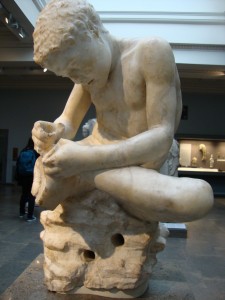
There was on statue of a small boy, Marble statues of a boy, the so-called ‘spinaro.’ This one was one of the most touching. The boy was pulling a torn out of his foot. And the expression on his face was just right, to show a little boy’s concentration and fascination. Having a little brother myself may have biased me towards this sculpture over others, and maybe it was just another thing in the museum that made me feel at home. But really, even the way to boy was crouched over suited the narrative of the piece.
On another note, the British Museum has so many connections to our course here in London. Aside from its fame Reading Room that relates to the literary history of this area, there is always the basic collection as a representation of all the different communities and cultures present. With a wing from almost every continent, the British Museum has very few things that could be considered wholly “British.” But at the same time, isn’t that really what we have learned here this past month, that NOTHING really is WHOLLY British? I think it is. In essence, the British museum encompasses our whole class and our final conclusion that there is no British identity. That there are only many pieces from many different elements of people’s lives that use to help with their personal identification.
Categories: Megan · Museums
Tagged: British identity, British Museum, Identity
Going to watch a live performance is a passion of mine. Music, dance, theater, to me it doesn’t matter, and it doesn’t matter how many times I’ve seen it done before, I think it is incredible to watch something take place in front of your eyes that has never happened that way before. The performers may have rehearsed a piece a thousand times prior to the time I get to see it, but knowing that I am the among the only people who get to see this particular version (unless of course it is being taped) is a real thrill to me. Sometimes things run exactly as they are planned, and other times because of circumstances, things change on stage. These changes could be when an actor trips on stage (luckily this did not happen in any of the performances we saw in London) and watching as they improve through the scenario, other on stage changes happen when actors react to their surroundings. For example when we saw “As You Like It” at the Globe Theater two of the actors in the cast in particular took note of individual audience members. I specifically remember when Jaques commented about schoolboys and made a motion to the students in their uniforms sitting on the side of the stage.
Another performance that I attended that included a large amount of audience interaction was when I saw the dance group StopGap performing at Watch This Space. Especially recently I have seen a lot of contemporary/modern dance performances that involve audience participation/interaction. StopGap did not look for participation, however they improved several times throughout the show. They would randomly pick out members of the crowd and imitate their poses. The dancers also randomly sat next to audience members, trying to get a reaction. When I see pieces like this it makes you realize how much work goes into a performance. Not only are the dancers/actors/performers required to react to what is on stage and what they rehearsed, but additionally to their surroundings.
The other performances we saw primarily stuck to the script, mainly because it was not in the nature of “Arcadia” or the Royal Philharmonic Orchestra to improvise or react to the audience during performance. But even still, we were fortunate enough to see all different styles of performances in an array of venues. For me I think the venue of the performance can completely change everything. StopGap performing inside the National Theater would not have had the same feeling, nor would the Royal Philharmonic Orchestra performing at the Watch This Space. The large orchestra in the enormous and beautiful Royal Albert Hall really set a grand scene, something that very few halls could have done.
I briefly mentioned this in my previous post, but the Theater and Performing Arts Exhibit at the Victoria & Albert Museum included an entire segment on sets and venues. It shows how important this aspect is to a performance, and sometimes one that I feel is overlooked. With the exception of StopGap (and I guess some might argue Shakespeare’s performances at the Globe) we saw very few site-specific pieces. I think site-specific performances are extremely interesting, and although I enjoyed visiting the beautiful theaters across the city, I am also glad for Watch This Space, where I was able to see performances that were specifically designed for that area.
I feel privileged to have had the opportunity to see so many incredible (and sometimes not so incredible) performances, and I am already planning return trips into the city to see more performances, theaters, and site-specific performances.
Categories: Amanda
Tagged: Site-specific, Theater, Theater and Performing Arts
As our time here in London comes to an end, I find myself needing to reflect on a few more aspects of London in my blogs. So this is my overview of London blog. It’s to touch upon the parts of London I either left out of previous blogs or the parts that I found to be my favorites. Also, I am hoping to cover assigned blog topics that I had not included in previous blogs.
To begin with I want to discuss the War Cabinet Rooms. I cannot believe I did not mention the War Cabinet Rooms in an earlier post. The presentation of the Cabinet Rooms was impeccable. I found myself very content to wander through the maze of the preserved Cabinet Rooms. Moreover, it guided the viewers through the rooms in such a way that it conveyed the detailed organization of the rooms and their role in World War II. I particularly enjoyed how there was emphasis placed on not only the role of the rooms in World War II London, but also how it was a representation of the determination of the British people. It provides a look into one of the most turbulent times in British and particularly London’s history. And it does not fail to reveal the main actors and issues of the time. For me, it achieved this through creating a museum based on the preserved and restored War Cabinet Rooms. The other museums of London were beneficial to walk through, but the only one where I felt there was respect not only behalf of the museum but on the behalf of the visitors was in the War Cabinet Rooms. Other museums I witnessed a horrifying lack of respect to the exhibits and artifacts. The worst incident o f disrespect happened in the British Museum. Visitors were touching the sculptures and taking vulgar tourist pictures with the mummies. It was embarrassing to witness.
Respect is something that I realize I find in the parts of London I liked the most. The theatre for instance inspires a great amount of respect, not only in the appearance of the actual theatres but through the performances. In all, excepting one, the performances we saw in London, I was inspired by the respect seen in the appearance of the theatres and in the sincerity of the actors’ performances. Each theatre I had the chance to enter was beautiful, even the Disney version of the Globe. All were inspiring to enter and be in for a performance. Luckily nearly all the performances I saw lived up to their settings, obviously I am excluding Blood Brothers from this. As I have said in earlier blogs, the respect the British have for theatre is remarkable. They have made it almost an innate part of their daily lives, at least here in London. This respect is something I have not had a chance to observe back home, at least not in such a widespread manner. Personally, the performance that was the best was Arcadia. It was a beautiful performance of an inspired script. And the Duke of York Theatre was a simple but beautiful setting for the performance. Also, I felt privileged to be in that audience, there was no instance of disrespect in the audience or even boredom. In comparison, Blood Brothers and its audience, myself included, was just awful. The musical was poorly performed and as such the audience was unable to settle in and enjoy. Fortunately though, one bad experience with London’s theatre did not put me off at all, instead it just makes me wish to ensure that the next performance I attend will be of better quality.
Another inspiring part of London are the churches. They are numerous and each uniquely beautiful. Initially, I had issues separating them in my mind; all were striking and imposing, especially St. Paul’s and Westminster. Over the weeks we have been here I have found myself differentiating between these churches and finding favorites. I must admit I have love for the grand architecture and history of the churches like Westminster Abbey and St. Paul’s Cathedral. It was an amazing opportunity to tour both of those churches and learn more of their histories. As I explored London on my own, I found that even the smallest churches here have long, intricate histories. I cannot say if I have a favorite church or even a preferred type of church in London. I guess I could answer more definitively if I had attended a service or two during our time here. Thus far though, I would say that my favorites have been ones where we have either toured or listened to concerts.
London as a whole has been a unique experience. It is one that ended too quickly now that I look back on it. Though, I look forward to the break from the city. This means I can return here in a few weeks or months and compare my experiences from now to the ones I will have in the future.
Categories: Kimberly
Tagged: churches, Theatre, war cabinet rooms
Identity is a concept that has never been a favorite of mine. I find that it is used too often and inappropriately. I have heard identity used to encompass individuals, cities, cultures, even nations, but to me how can this one word and concept be that encompassing? For me it is not all-encompassing. It is something decided on an individual level. Qualities that compose one’s identity can be shared on various levels, such as city, culture, similar interests, et cetera. Trying to label a larger group as a single identity, in my opinion at least, is impossible. Similar characteristics in individual identities found in larger groups such as a religion or culture are labeled as an identity. Technically this is correct, that identity consists of characteristics A, B, and C, which are all found within members of the larger group. My issue with this is that there is more to their identities than this all encompassing group identity. This is where I feel as though identity changes from a useful individual concept into a misnomer.
Our time here in London has cemented my opinion concerning identity. The city is a vast collection of numerous people and as such thousands of identities. It is wrong to try and label the city or groups of individuals here under one identity. Especially when you consider how quickly identities can change and how quickly they can be reassigned or misconstrued. Appearance is one way that identities can be misconstrued or changed. If one dresses in a certain way than their identity is predetermined before they are even allowed to introduce themselves. Relying on identity of a group to understand the individuals of the group is not a sure way of actually understanding them. Identity is a way that we attempt to label individuals and groups. As we explored various parts of London including the Hindu Mandir and Sikh Gurdwara, I found that we discussed their cultures and ways of life instead of their identity in London. It was too hard to give them an identity, but we could discuss cultural differences, ways of life and attempts to transition into British society.
Identity is something that cannot be relied on to convey thoughts on London. It is nearly impossible to label one identity for an entire group. Identity is on an individual level. Exploring London has helped me further understand what used to be my confusion about identity.
Categories: Kimberly
Tagged: confusion, Identity
September 15, 2009 · 3 Comments
Instead of regurgitating into this blog post all of the research I did for my Hyde Park group walking tour, I’d like to present green spaces in a slightly different manner. This photoessay will show my impressions of what green spaces mean to London.
So, what are green spaces?

Green spaces are very, very green.

They are right in the middle of a busy city...

but quiet enough to sit and read.
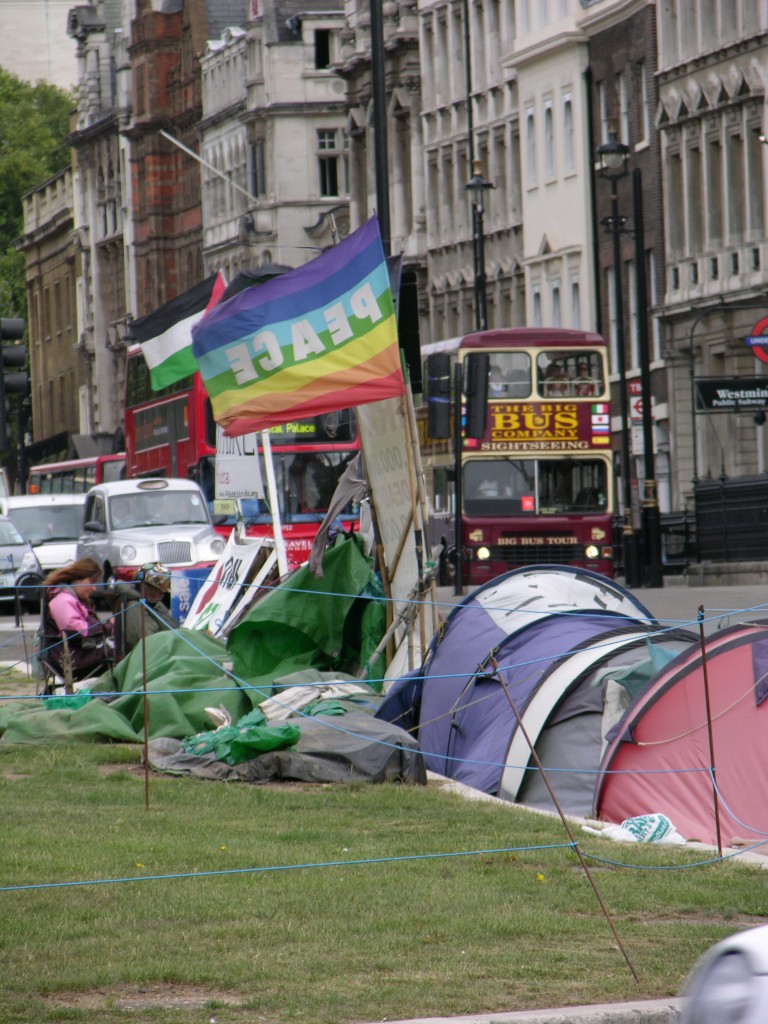
Green spaces are political

beautiful

and festive

yet serene.
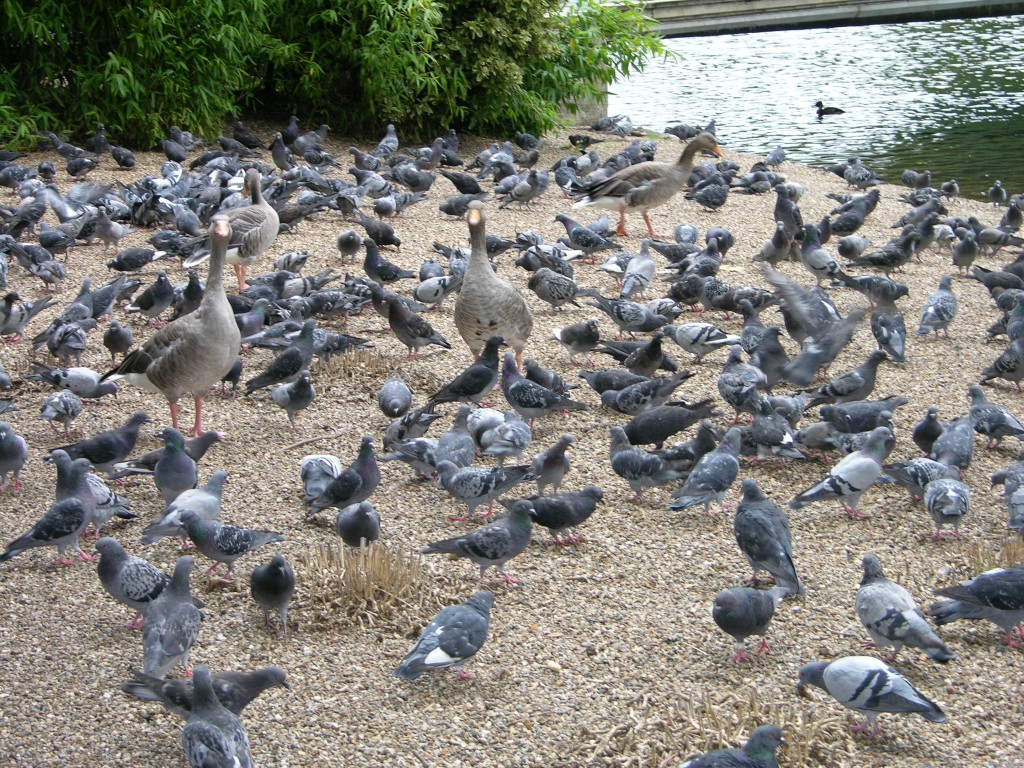
You can bring the whole family...
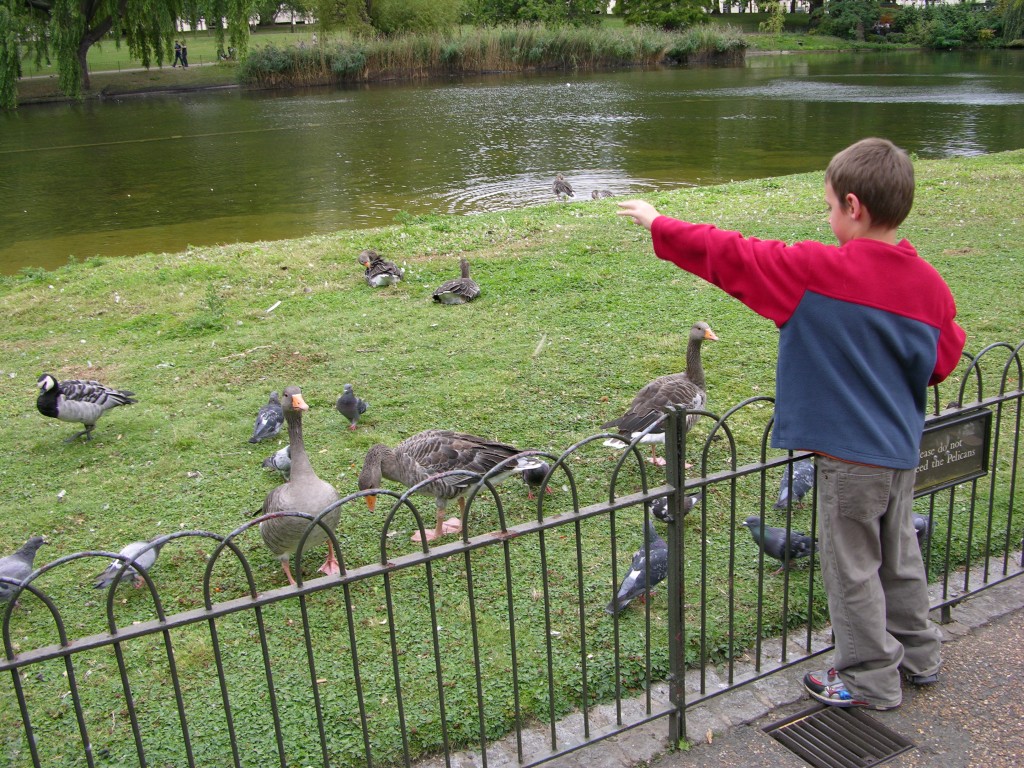
or just the kids.
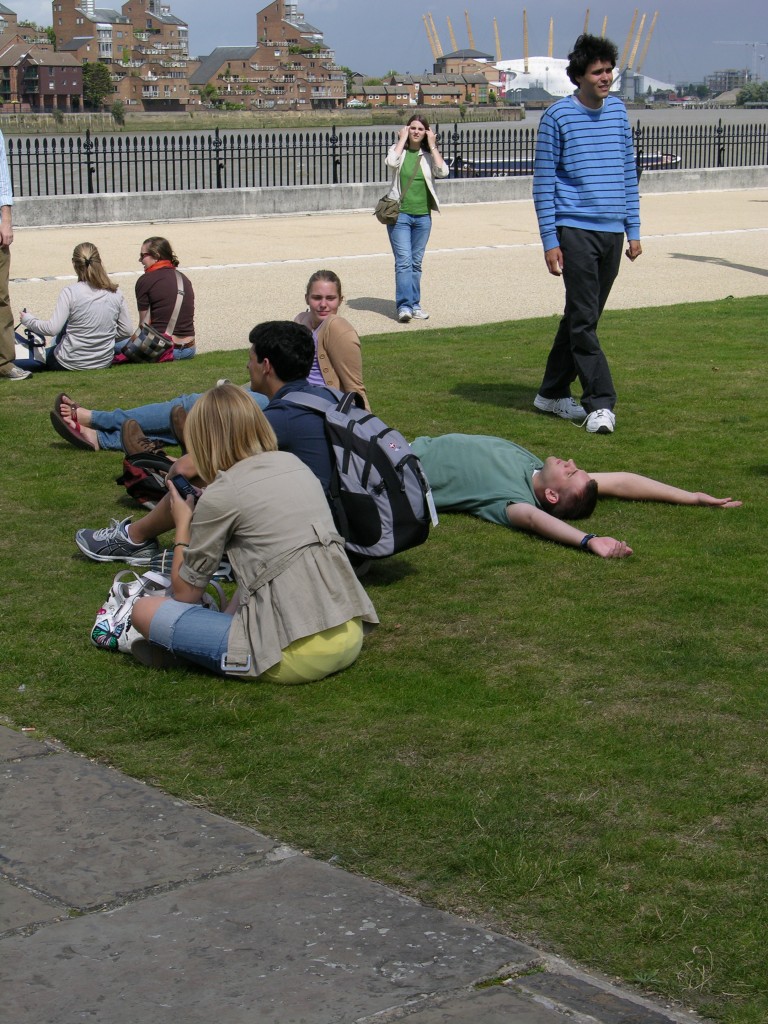
So sit back and relax.
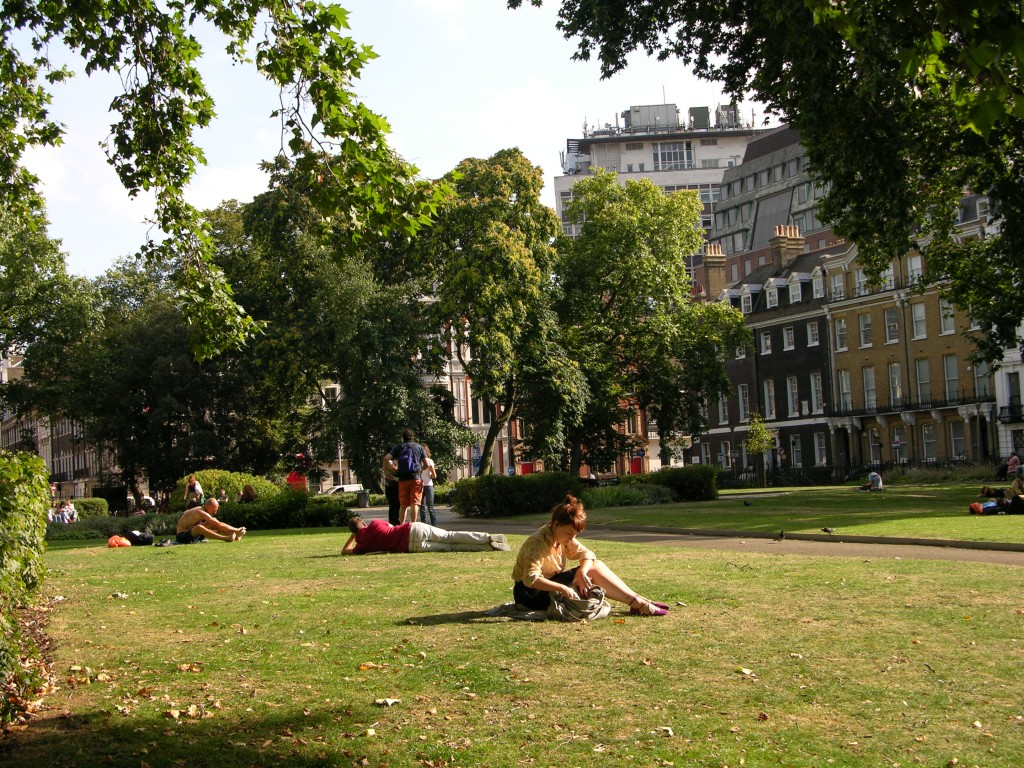
Soak up some sun.

Then, cool off with a quick dip.
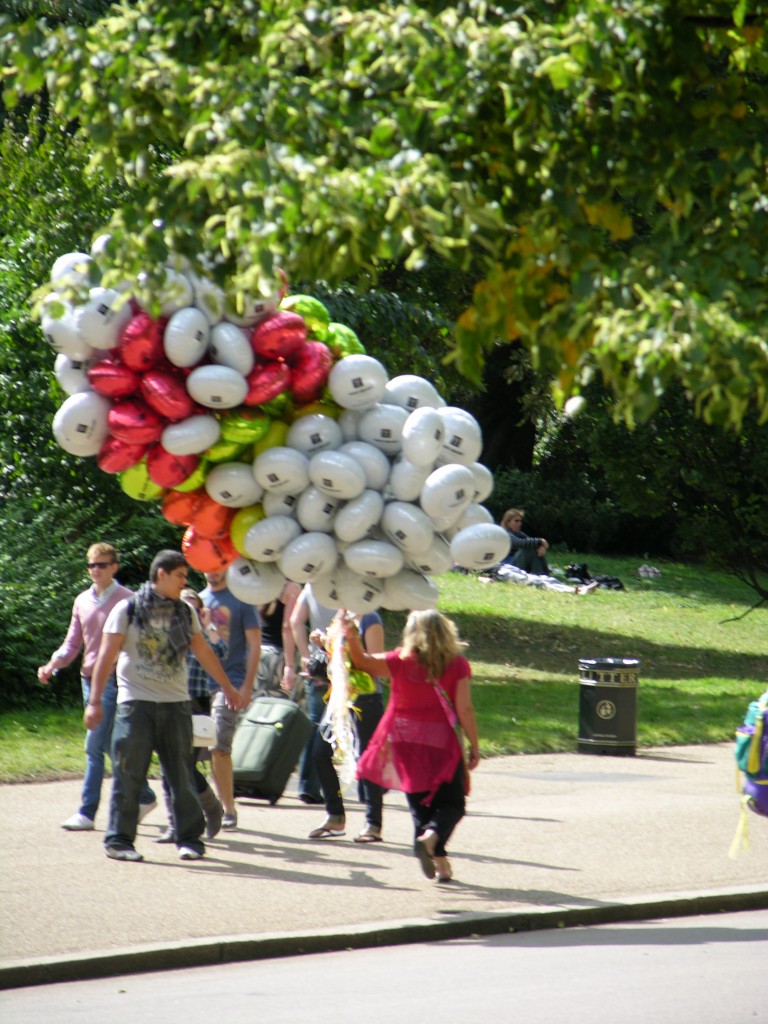
But no matter who you are or what you do...

green spaces lead you straight to London's heart and soul.
Categories: Sarah
Tagged: family, Festivals, fun, Green Spaces, photos, Politics, Relaxation
September 15, 2009 · 1 Comment
This past week I have been reading ” Watching the English” by Kate Fox. Now I am not very far into it, but I am very intrigued with the topic. I feel as though I have found a way to observe a typical day for an average London tourist. This observation has led me to realize, we don’t fall under this category, however we have succumbed to a few minor mistakes, making our nationality quite obvious. Now, my point in this post is to address the American’s tendency to stick out. kinda?
One: The Tube
Depending on how large the group is, and depending on who is in the group, the moment the doors fly open we begin to fluster and annoy everyone on board. We, unaware of our high tones, are excited about what we’ve seen or where we are going, so why wouldn’t we talk about it? At this point I am unable to recall how many stares and glares our group of 27 have been flashed, and I personally have felt tense knowing everyone is horrified by our tones, but what is wrong with a little excitement? Why is it taboo to talk to each other on the train? Then again why are American’s so darn loud?
Two: Eating Too Fast (Food in General)
As of now, I have only sat down to eat about eight times. I enjoy my meal, even though it costs more when you choose to sit down, and then I leave. Why is it that they tack of a few pence and say “take away” every time you order? Why is it a different price? And why do all Americans say your dinning out and then sit anyways? If your in a restaurant where you dine in, and have a waiter, it becomes a completely foreign experience for most Americas. I don’t know about you guys, but when we eat out at home, we go in, sit down, order right when the waitor comes up, eat, pay the bill, and leave. What is the rush? Here in London the service want’s you to take your time. When Amanda and I finished our meal at an Italian place down the street and asked for our check, we were asked a stream of questions including “did you not like it?”, “Are you in a hurry?”, “Why don’t you want dessert?” etc. Why do we rush meals, and why do the British dine leisurely?
And why do we have to ask for the check? I always forget about that!
Three: The Theater
This may be just a “me” complaint, but what happened to the glamour of going to the theater? Bright LIghts, fancy clothes, classy cocktails, beautiful people? As of now we have been to quite a few theatrical and musical performance and I can not help but notice how relaxed the event has come to be. When I was younger I remember every Christmas getting all dolled up to see the Nutcracker with family and friends. I also remember my first NYC Broadway performance, and feeling as though I needed to look beautiful just to enter the theater. Today the theater is the last event on a busy tourists agenda. So, dressed in jean shorts and cotton tank, shopping bags in hand they strut into the theater. Glamour-less? sad.
I guess I wanted to realize the obvious. As much as we attempt to fit into this culture, everyone will notice where your from. We will always stand out. Our voices, our clothing, our eating habits, and our on the go attitudes; only to mention a few. We are different, and there is not way of hiding it. We cover this up, and ignore it, because were having fun and were happy, but think about it. Were foreign. We can judge the way the English think and act, but really, were the odd ones. I guess the question is, should we learn to conform in this upcoming year? Are we subject to lose our identities for the sake of fitting in?
All this talk of acclimating, now is it our turn?
Categories: Patsy
Tagged: Acclimation, Broadway, Checks, Culture, Eating, Foreigners, Glamour, Jean Shorts, Thater, the Tube, Watching the English
After spending a month in London, I’ve come to understand the vast importance of pub culture, but I’ve also learned that the pubs fall far from my original expectations. In my mind, I’ve always equated pubs with American bars but have found the comparison to be entirely false. In my hometown, very few people go to bars at all. When they do, the point is to have a drink (usually after work, and often by yourself) and then go home. In my opinion, the bars are rather dirty looking and dimly lit. They don’t attract the most upstanding of people, either. There is no entertainment within, and the bar countertop itself takes up the majority of the establishment.
In complete contrast, the majority of the pubs I’ve been to throughout the past month have been busy and flourishing. Different bars cater to different age groups (the Court for university students, others for businessmen, etc.) but there often seems to be a mix of people regardless. They’ve all been reasonably clean and large, housing pool tables or jukeboxes for entertainment in addition to a wide variety of drinks. The sheer number of tables makes clear that the pub expects you to stay for a significant chunk of time, and I have always felt comfortable in doing so.
To me, the pub scene here is most similar to the coffee shop scene near my home. People go to socialize, meet with friends, chat, and relax. As a barista, I know that people make connections with their servers and occasionally become close friends. Attending a pub in London or a coffee shop in New Jersey has very little to do with what you’re drinking, but everything to do with the people you join. As we learned on the pub tour, different bars specialize in different ales or brewed beers. Likewise, I’ve worked in two different coffee shops that pride themselves in roasting their own particular beans and there are countless others in the area that boast of original, unique flavors as well. The only difference is the rich history that bolsters the pub community, whereas coffee shops in northern New Jersey don’t tend to have a long standing historical context.
My favorite pub was the Jack Horner, which was recommended to me by a friend who lives in London. It’s often overlooked by tourists, so I met a lot of awesome people who live in the nearby area. Being at tourist-attraction pubs is certainly fun (albeit filled with some sketchy individuals) but I prefer the less crowded ones, as they feel more authentic to me. Overall, it was fun to explore an aspect of British culture formerly so foreign to me.
Categories: Amy
Tagged: Bars, Coffee Shops, Jack Horner, New Jersey, Pubs, Tourists
September 15, 2009 · 5 Comments
I don’t know how many people have been keeping up with the London news, but I thought I’d share a bit of info because it seemed relevant to the class. Over the past week there has been an ever growing tenuous situation. Firstly, we narrowly missed a 24 strike from the RMT. But secondly, and more prevalently, on September 11th near a Mosque in Harrow there was a clash between the Unite Against Fascism (UAF) and the Stop Islamization of Europe (SIOE). The protest had been led by the SIOE and was meant to mark the 8th anniversary of the Twin Tower attacks. I would like to pause for a moment and ask how many Americans have ever shown a demonstration for the 7/7 attacks, let alone escalate to violence over it? The apathy of our nation comes in handy for once.
Seven people were arrested on September 11th, and a week before, on September 5th, 90 people were arrested when a disturbance broke out in Birmingham. These clashes between anti-immigrants and Muslim/leftist groups have been going on as far back as May; however, they have had little in the way of collateral damage.
As mentioned above, America and UK handle protests and outbreaks very differently. While I wouldn’t go as far as to say it’s a hobby, England does have a tradition of riots and violent protests. They enjoy a good scuffle, and it seems to alleviatetension at least to some degree. Our history with national conflict has been rather limited. The British on the other hand are amazingly efficient: they pack a protest with more police than protesters and basically encircle the people, an amazingly intimidating deterrent for your average protest. The majority of the 1.6 million Muslims in the UK are situated in England, and now with the rising conservative/anti-immigration tide approaching it will be interesting to see if small scale scuffles will be enough to satisfy the hunger of protesters. This also brings into question the over-asked question of what is an englishman? When are you no longer an Immigrant. And more importantly does being a member of organizations like UAF automatically make you a target for anti-immigrant scorn? One thing that I did find interesting also was the idea of leftists and Muslims teaming up together, this idea leads me to believe it isn’t necessarily an immigration problem, but rather a non-immigrant one. Guy Fox, IRA, SIOE: for a nation who preaches secularity, they sure love their religious fights.
Anyway, cheers
Categories: Andrew R
Tagged: anti-immigration, Harrow Central Mosque, protests, SIOE, UAF

















